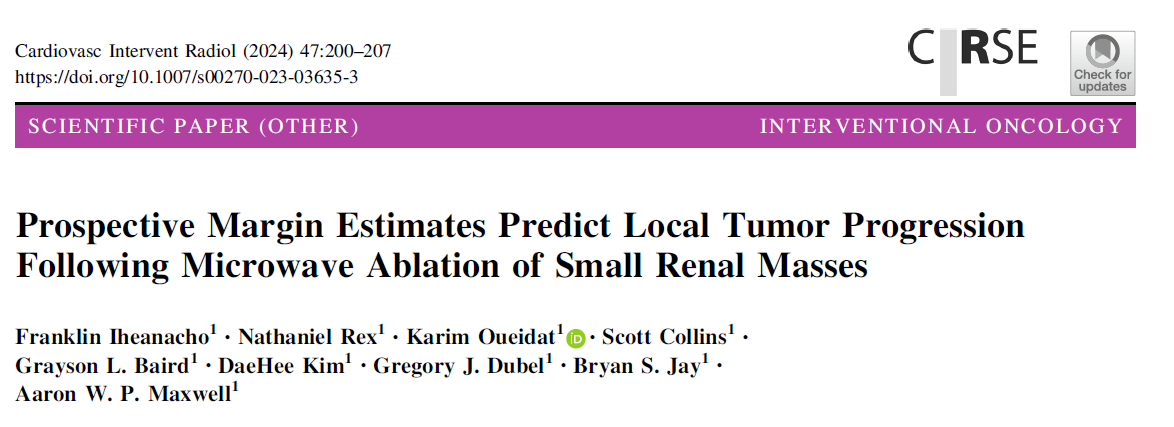Margin Estimates and LTP in Small Renal Masses - Could CAS-One IR help?
We noticed a recent publication titled "Prospective Margin Estimates Predict Local Tumor Progression Following Microwave Ablation of Small Renal Masses" and since the topic of margins, measurements, and their relation to local tumor progression are always interesting to us, we decided to give our opinion on this piece. We also pose some open questions regarding their findings with regards to CAS-One IR's capabilities.

The study design - a retrospective, single-center cohort of 128 patients with small renal masses treated with microwave ablation., to see if the estimated ablation margins are a predictor of local tumor progression. They used a hazard model, which is common (but sometimes hard to comprehend!) for evaluating outcomes in cancer patients. The general finding was affirmative towards the fact that prospectively generated margin estimates might be able to be used to predict LTP, and smaller margins yield greater LTP - which conceptually makes sense.
The methods were as follows:
- Manual segmentation of the kidney and tumor on diagnostic imaging
- Co-registration with intraprocedural CT planning imaging
- Instrument annotation on placement control image
- Projection of manufacturer's "predicted" ablation volume onto the instrument tip
- Co-registration with planning image
- An average of 7,500 discrete measurements of the annotated tumor to the co-registered ablation volume. This was done with an in-house software and took less than 1 minute.
Results-wise, among patients with LTP, mean, median, and average maximum ablative margins were significantly smaller when compared to patients without LTP.
We are happy the authors are on a similar mission as us here at CASCINATION, to show that planning ablation zones, and measuring the ablation zones afterwards, seems to be critical in better patient outcomes.
We have to wonder - if this study was repeated with CAS-One IR, what would change?
- CAS-One IR has the estimated ablation volumes built into the software, would this make planning better/faster?
- Another feature of Quality Ablation with CAS-One IR is the needle placement using stereotactic navigation - surely this element is impactful on the overall treatment.
- If AblaSure, our AI-driven algorithm, would be used to confirm ablation margins at the end of the procedure, would the outcomes match? It is well documented that analysis can vary from one expert to the next
- There were 4 different operators with varying experience - without a standardized workflow, did this impact any results?
Finally, not to be overlooked - this study found that Minimal Predicted Ablative Margin was not significantly associated with LTP risk! This is a heavily researched topic and may be contrary to other studies. We will continue to stay up to date on this topic.
Thanks very much to the authors, Franklin Iheanacho, Nathaniel Rex, Karim Oueidat, Scott Collins, Grayson L. Baird, DaeHee Kim, Gregory J. Dubel, Bryan S. Jay, and Aaron W. P. Maxwell from Brown University for the interesting research.

